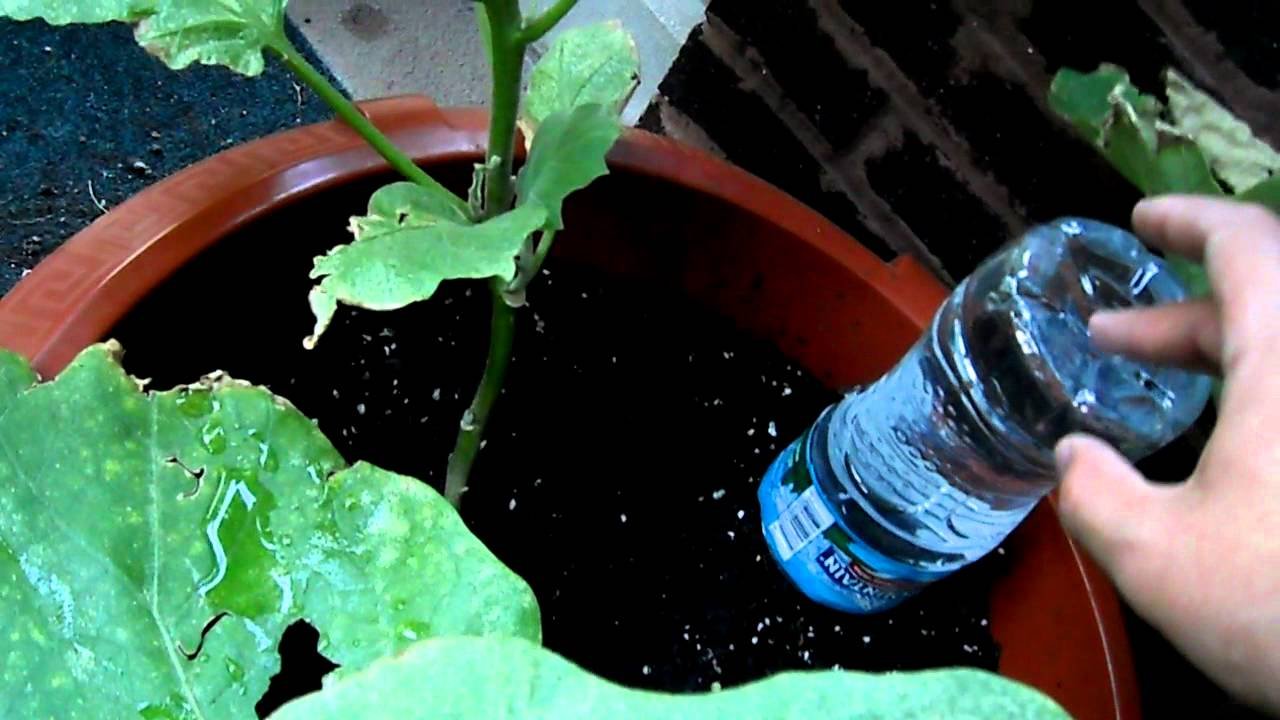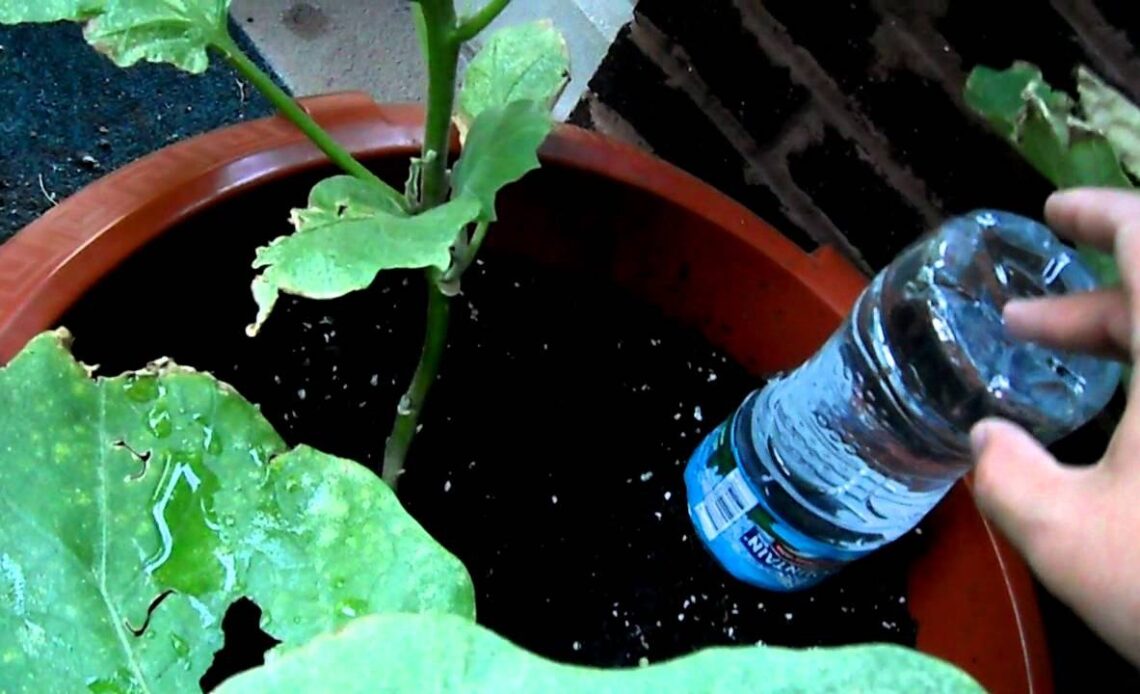Watering your plants may seem like a simple task, but when done inefficiently, it can waste precious water, stress your plants, and increase your workload. In today’s world of climate change, water conservation, and sustainable living, gardeners everywhere are turning to **clever, low-cost solutions** to keep their crops thriving — and one of the smartest tricks you’ll learn in this **Gardening Class** is how to use plastic bottles as a **DIY drip irrigation system**.

The image above perfectly illustrates this game-changing gardening hack. In the first photo, we see a clear plastic water bottle being inserted upside down into the soil of a potted plant. This technique is simple yet incredibly effective: poke a few small holes in the bottle cap or along the sides, fill the bottle with water, and bury it halfway into the soil. As the soil dries out, water gradually seeps out through the holes, providing a consistent, slow-release hydration directly to the plant’s root zone. This not only conserves water but also **prevents overwatering**, which is a leading cause of root rot and plant disease.

The second image expands the method to a larger garden bed, where multiple green plastic bottles have been strategically placed throughout rows of young leafy vegetables. This setup creates a grid-like watering system that ensures even moisture distribution across the entire plot. It’s a low-tech solution with high impact, especially useful for gardeners who travel frequently, live in hot or drought-prone areas, or simply want to reduce their daily workload without compromising their crops.

Beyond convenience, this technique is an excellent example of **upcycling** — turning waste into a valuable resource. Instead of throwing away single-use bottles, gardeners repurpose them to support plant health and sustainability. It’s a perfect blend of eco-conscious thinking and practical gardening.
Installing your own DIY bottle irrigation system is easy. Start by cleaning your bottles thoroughly, then poke small holes in the cap using a hot needle or nail. For larger bottles, you can create additional holes along the sides to increase water flow. Once filled with water, bury them near the root zones of your plants, making sure the holes face the soil. That’s it — no expensive hoses, no electricity, just gravity and smart placement.
This method is particularly useful for crops like tomatoes, lettuce, cucumbers, peppers, and herbs — plants that thrive with **consistent moisture** but dislike wet leaves. By keeping the foliage dry and the roots well-watered, you reduce the risk of fungal diseases and support deeper root development.
In our **Gardening Class**, students learn how to adapt this technique for different plant types, soil conditions, and container sizes. We also explore how to combine this system with natural fertilizers, compost teas, and mulching for even greater efficiency. Whether you’re growing in pots, raised beds, or a backyard farm, this water-saving trick is one of the most valuable tools in the modern gardener’s toolbox.
So if you’re looking to **save time, save water, and grow healthier plants**, don’t underestimate the power of a simple plastic bottle. Sometimes, the most effective solutions are also the most humble.
